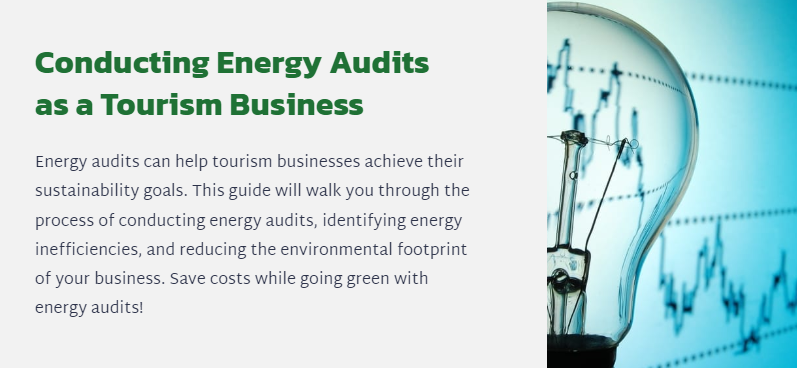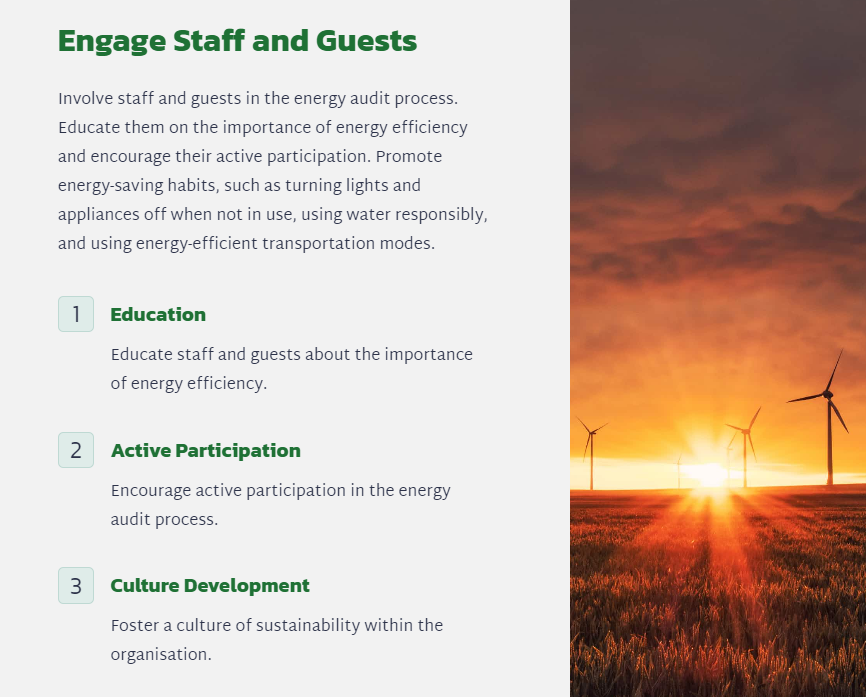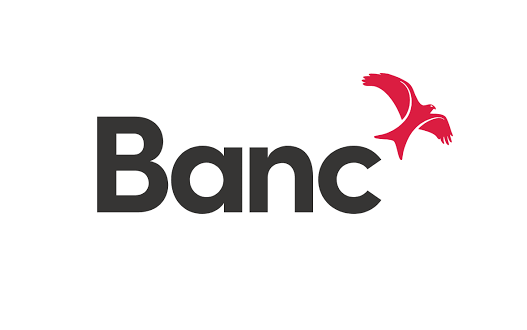
Energy audits not only help identify energy inefficiencies, but also provide opportunities for cost savings and reducing the environmental footprint.
This article will guide you through the process of conducting energy audits to promote sustainability within your tourism business.
- Establish objectives and scope
Before creating an energy audit, clearly define your objectives and scope. Identify what aspects of your tourism business you wish to assess, such as energy consumption in accommodation facilities, restaurants, transportation or recreational areas. Set specific targets, whether it's reducing energy consumption by a certain percentage or increasing the use of renewable energy sources.
- Assemble an energy audit team
Form an energy audit team consisting of individuals with diverse expertise, including energy specialists, facility managers and employees familiar with your business operations. Collaborating with an external energy consultant can also bring valuable insights to the process. Assign roles and responsibilities to team members to ensure a comprehensive audit.
- Collect energy data
Gather energy data from various sources within your tourism business. This includes electricity bills, fuel consumption records and water usage data. Analyse these records to establish a baseline of energy consumption, identify patterns and pinpoint areas of potential inefficiencies.
- Conduct a walk-through audit
Perform a walk-through audit of your facilities to visually inspect energy-related equipment, such as lighting fixtures, HVAC systems, kitchen appliances and transportation vehicles. Look for signs of wear and tear, outdated technology or inefficient practices. Take note of potential areas for improvement, such as insulation, lighting upgrades or equipment replacements.
- Engage staff and guests
Involve your staff and guests in the energy audit process. Educate them about the importance of energy efficiency and encourage their active participation. Foster a culture of sustainability by promoting energy-saving habits, such as turning off lights and appliances when not in use, using water responsibly and utilising energy-efficient modes of transportation.

- Analyse and evaluate findings
Analyse the collected energy data and findings from the walk-through audit. Identify energy hotspots and prioritise them based on their potential for energy and cost savings. Consider factors such as payback periods, return on investment and environmental impact when selecting energy-saving measures to implement.
- Develop an energy efficiency plan
Based on the evaluation, develop an energy efficiency plan that outlines specific actions to be taken, along with a timeline for implementation. This plan should address short-term quick-win solutions as well as long-term sustainable measures. Consider incorporating renewable energy sources, such as solar panels or wind turbines into your plan to reduce reliance on fossil fuels.

- Implement and monitor
Implement the energy efficiency plan in a systematic manner. Track progress regularly and monitor energy consumption patterns after implementing energy-saving measures. Engage your staff and guests by providing regular updates on energy savings achieved, encouraging continuous improvement and celebrating successes.
- Evaluate and adjust
Periodically review and evaluate the effectiveness of your energy efficiency initiatives. Make adjustments based on the results and feedback received. Stay informed about new technologies and practices emerging in the field of sustainable energy to continually enhance the efficiency of your tourism business.




